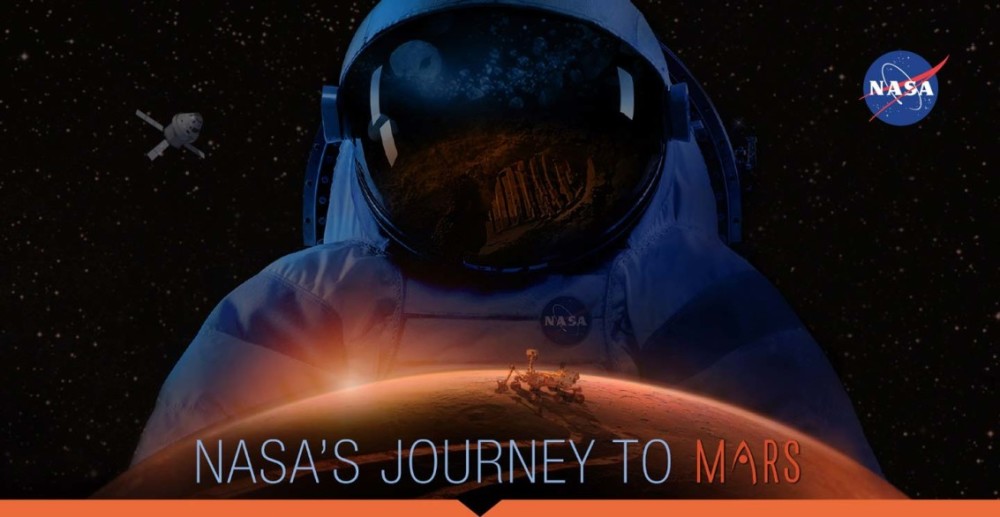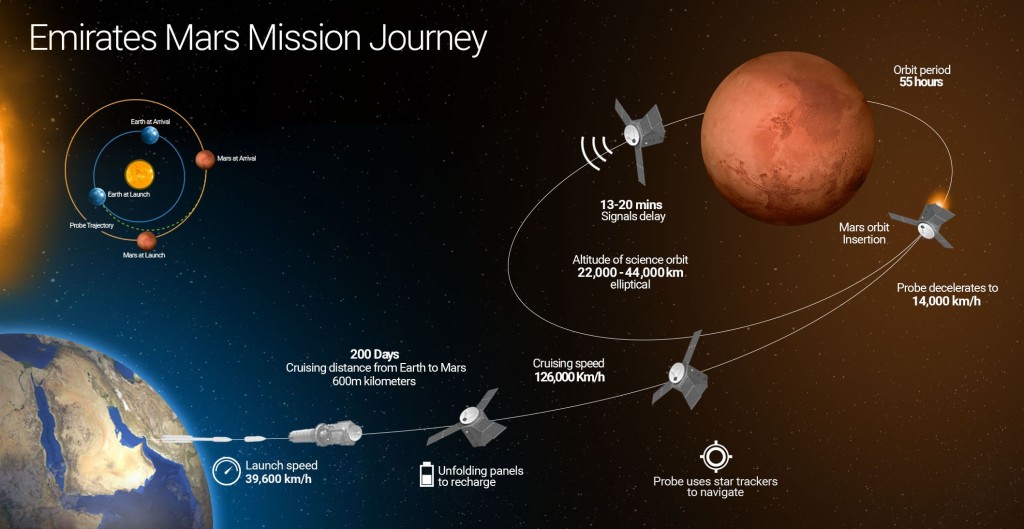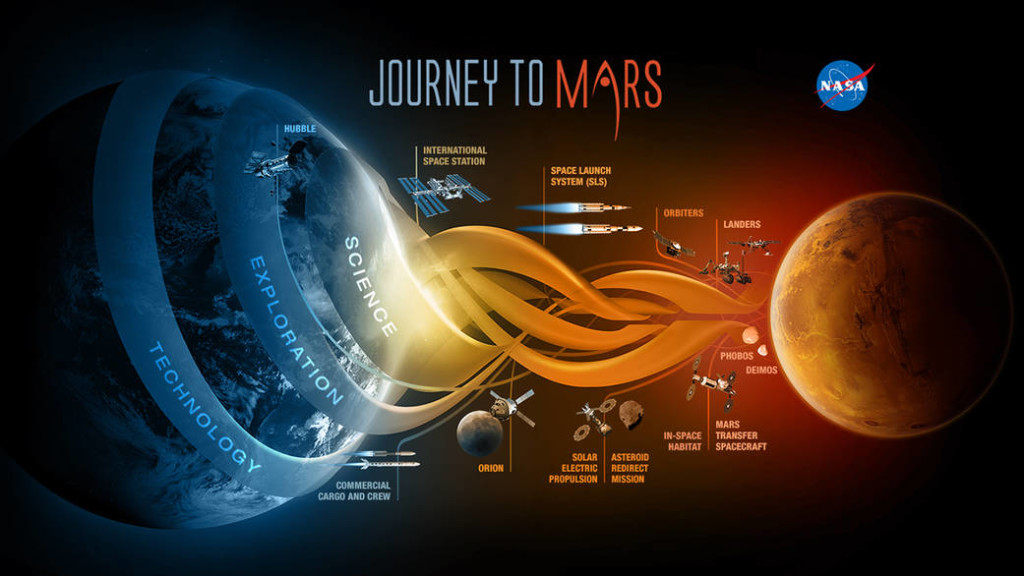
NASA’S Journey To Mars Logo
NASA is leading our nation and our world on a journey to Mars. Like the Apollo Program, we embark on this journey for all humanity. Unlike Apollo, we will be going to stay. This is a historic pioneering endeavor—a journey made possible by a sustained effort of science and exploration missions beyond low Earth orbit with successively more capable technologies and partnerships.
This pioneering endeavor carries out the direction given to us in the 2010 NASA Authorization Act and in the U.S. National Space Policy. It engages all four NASA Mission Directorates and all NASA Centers and Laboratories. It enlists the best of academia and industry across the nation and builds on our existing international partnerships while embracing new ones. And like pioneering efforts before it, the journey to Mars will foster and attract new commercial enterprises.

Emirates Mars Mission Journey
Why Mars? Mars is the horizon goal for pioneering space; it is the next tangible frontier for expanding human presence. Our robotic science scouts at Mars have found valuable resources for sustaining human pioneers, such as water ice just below the surface. These scouts have shown that Mars’ geological evolution and climate cycles were comparable to Earth’s, and that at one time, Mars had conditions suitable for life. What we learn about the Red Planet will tell us more about our Earth’s past and future, and may help answer whether life exists beyond our home planet. Together with our partners, we will pioneer Mars and answer some of humanity’s fundamental questions:
– Was Mars home to microbial life? Is it today?
– Could it be a safe home for humans one day?
– What can it teach us about life elsewhere in the cosmos or how life began on Earth?
– What can it teach us about Earth’s past, present, and future?
Mars is an achievable goal. We have spent more than four decades on the journey to Mars, with wildly successful robotic explorers. The first human steps have been taken through science and technology research aboard the International Space Station (ISS) and in laboratories here on Earth. We are taking the next steps by developing the Space Launch System (SLS) and the Orion crewed spacecraft, demonstrating new operations to reduce logistics, and preparing for human missions into cislunar space, such as exploring a captured asteroid. There are challenges to pioneering Mars, but we know they are solvable. We are developing the capabilities necessary to get there, land there, and live there.

Technology drives exploration and many of the technologies we need are in various stages of conceptualization, development, or testing. Consequently, NASA will continue to make key decisions and further define steps on this journey as technology and knowledge mature. This is a good thing, as it allows new ideas, new technologies, and new partnerships to be developed during the next two decades of this journey. This document communicates our strategy and shares our progress. It reflects the ongoing discussion with our stakeholders and partners, and an update on current plans and activities within an evolving architecture.
It identifies the challenges facing future pioneers and our strategy for addressing these challenges. NASA’s strategy provides an evolutionary, resilient framework for defining future missions. We are making progress on the journey to Mars using current missions to advance technologies and systems for the next decade, and we are conducting the technical analyses needed to plan for the decades beyond. We are on a journey to Mars. We have already taken the first steps. We are excited by the challenges that remain, knowing they will only push us further. Come join us on the journey!
Check out the full Journey to Mars Booklet